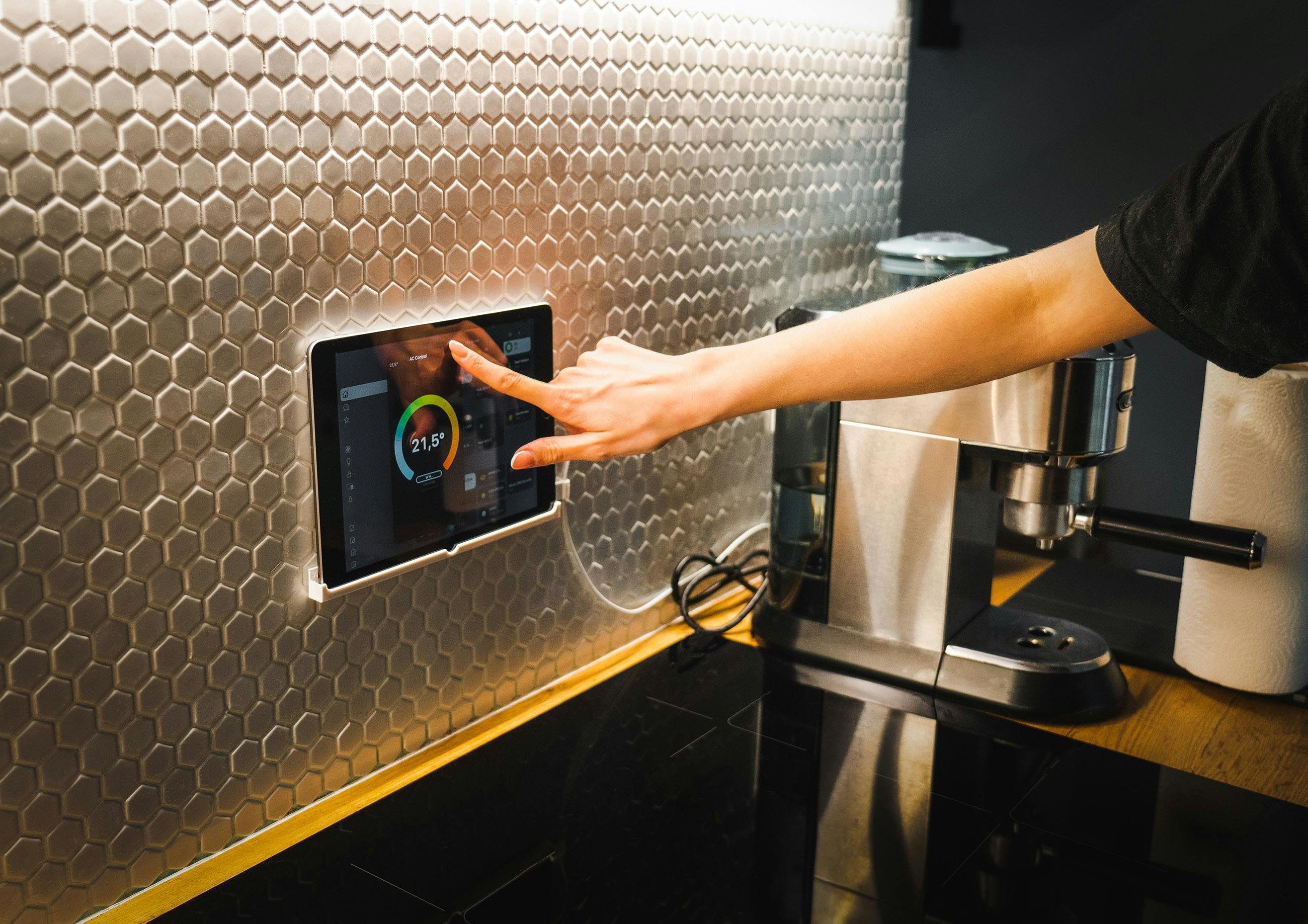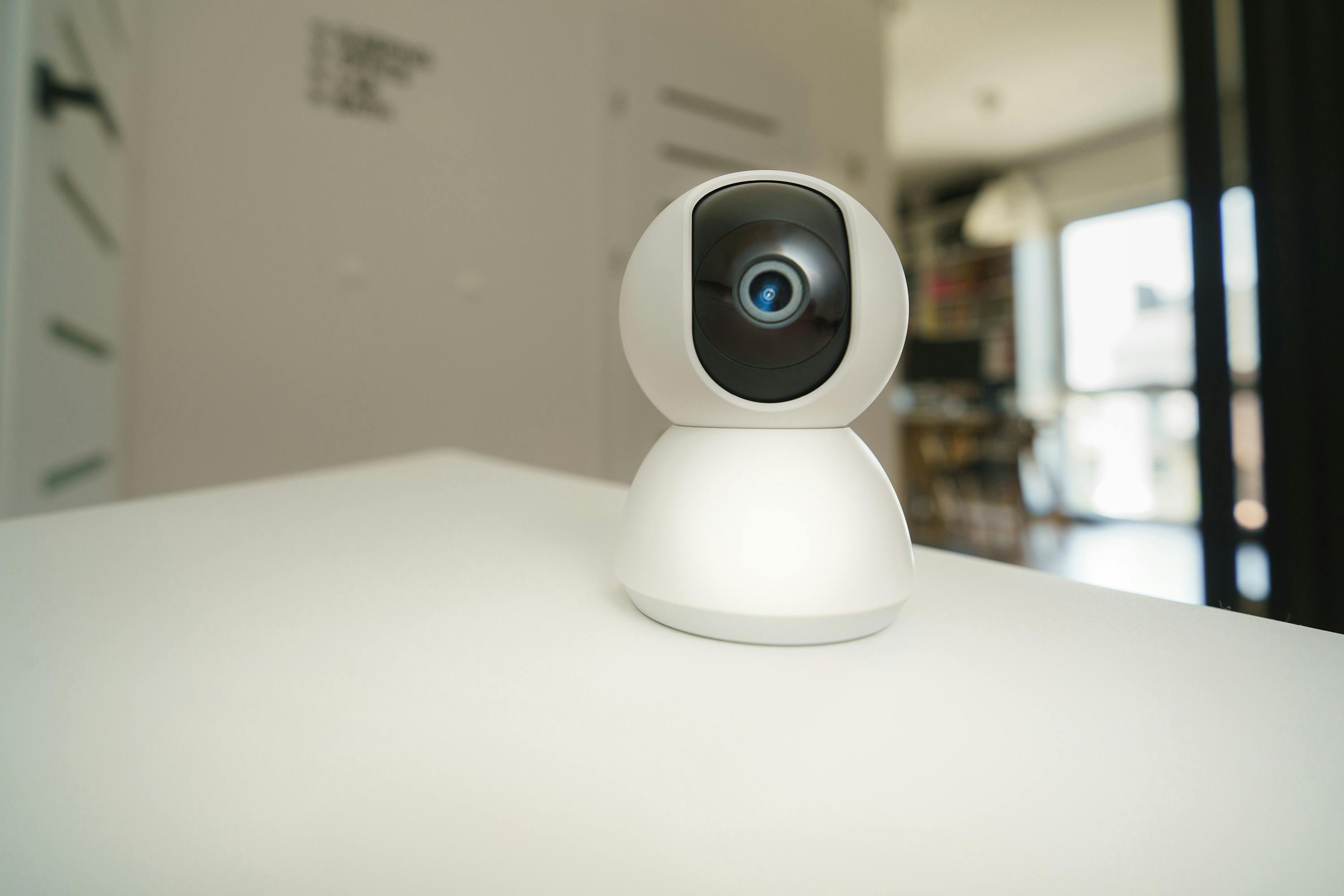Simple Guatemala Smart Home Automation: Comfort and Safety
Last year, while helping a friend set up his new home just outside Antigua, I couldn’t help but notice the beautiful collision of old-world charm and modern possibility. The cobbled streets. The colonial facades. But inside—increasingly—there’s smart lighting, connected cameras, even voice-controlled fans. What struck me was how accessible comfortable, safe, and intelligent living could be for locals and expats alike… if you know where to start. Honestly, I reckon the technology’s never been easier—or more practical—for Guatemalan homes, whether you’re in the bustling capital or a serene lakeside community1.
Here’s the itch I want to scratch: For many, “smart home automation” still sounds like a futuristic luxury. But the truth? Guatemala’s mix of reliable hardware, steadily improving infrastructure, and engaged communities means anyone can automate their home for everyday comfort and security. Whether you want your lights to come on before you step through the door, your gate cam to buzz your phone, or your appliances to optimize power usage, you’re not just keeping up with the world—you’re leading locally. This guide breaks down everything actual Guatemalan homeowners, renters, and digital nomads wish they’d known when starting out. Practical, budget-friendly, and—above all—authentically human.
Why Automate Your Guatemalan Home?
Ever notice how local news always features a new innovation in home security or energy-saving tech2? Guatemala—despite infrastructural quirks—has become a testing ground for practical, adaptive smart solutions. From basic sensors helping prevent power theft to WiFi video doorbells making home deliveries safer, there’s a real, everyday impact. What really excites me is seeing ordinary folks—retired teachers, entrepreneurs, digital nomads—using automation not for show but for peace of mind.
- Safety: Monitor gates and entryways remotely (even when you’re out shopping in the market).
- Comfort: Pre-cool rooms before you arrive, light paths automatically at night, wake up to fresh coffee (yes, really).
- Avoid unnecessary routine chores—free up time for actual living.
- Get power consumption alerts to avoid excessive utility bills.
- Check pet cams during travel days. No more texting neighbors for status updates.
Here’s a misconception I hear all the time: “It’s expensive, complicated, and requires English-speaking service.” Actually, most modern devices from established brands (and locally supported ones) work seamlessly in Spanish, require minimal setup, and come at a wide range of prices3.
Guatemalan homes leverage smart features for security and daily comfort. Safety-focused automation—like cameras and sensors—outpaces entertainment gadgets by a mile. Households routinely report feeling “safer and more in control” even with basic setups. I’ve personally seen neighbors collaborate on WhatsApp to monitor shared entryways using simple, affordable smart cams.
Setting Realistic Automation Goals—Comfort & Safety First
Let me think about this. How do you even start? My advice—whether setting up in Guatemala City or small-town Sololá—begin with one clear comfort upgrade and one security improvement. Don’t get swept away by the prospect of controlling everything from your phone. Instead, anchor your plan to real needs:
- Do you want to automate lighting to deter intruders after dark?
- Is remote lock/unlock more valuable for family convenience?
- Would energy-usage tracking genuinely save you money?
- Are you often away and need to check on pets or deliveries?
During a recent consultation, a young family asked, “Is it safe to use smart cameras in Guatemala?” Turns out, most major brands offer robust encryption. Locally, devices compatible with Kasa, Xiaomi, and TP-Link platforms can even be managed via secure cloud accounts. The takeaway: set goals based on your lifestyle—not generic product features4.
All-In-One Basics: Devices That Actually Work Here
I used to assume every device was plug-and-play. That was a HUGE mistake. What you genuinely need in Guatemala is local compatibility—especially with voltage quirks (some houses run on 110V, some on 220V). What works in North America may not always apply without an adapter or transformer. Here are starter essentials, with device types anyone can use:
- Smart Plugs: Control small appliances and fans remotely. Look for models rated for Guatemalan voltage standards.
- WiFi Bulbs: Automate lighting schedules and colors. Compatible with Alexa or Google Home, often available locally.
- Security Cameras: Outdoor options should have weather resistance, especially for tropical climates. Some offer cloud recording directly to providers compliant with Guatemalan privacy laws5.
- Smart Locks: Easily installed in standard doors. Ensure backup manual access in case of power interruption.
What I should have mentioned first—before getting technical—is you don’t need to automate everything at once. Pick the gadgets that lift the mental load daily, and build out from there.
Guatemala’s Internet & Electrical Realities
Honestly, this is where most guides gloss over crucial details. While many believe they can just plug in and go, Guatemala has unique connectivity quirks. According to recent data6, urban areas receive reliable broadband, while rural and semi-rural zones might encounter spotty connections. What puzzles me sometimes is the mismatch—great mobile coverage in remote spots, patchy fiber in the city outskirts. To set up a truly resilient smart home, you have to plan for occasional outages and variable speeds. Here’s my personal checklist:
- Invest in devices with offline fallback modes—apps that let you control appliances via Bluetooth if WiFi drops.
- Double-check router compatibility. TP-Link and Huawei routers dominate locally, but not all smart hubs connect smoothly.
- Secure backup—consider an uninterruptible power supply (UPS), especially if automating gates or essential locks.
- For smart cameras, favor models with local SD card storage as cloud uploads lag during peak hours.
Guatemala was among the earliest Central American countries to launch 4G LTE coverage in regional hubs. As of 2024, roughly 68% of homes in urban zones have consistent broadband access, while most rural applications rely on mobile data or satellite solutions7. This diversity in infrastructure makes smart home planning both challenging and rewarding, especially for those prioritizing flexibility in automation.
Budget Planning & Cost-Saving Tips: Real Numbers for Guatemala
Okay, let’s step back. Dollars (or quetzales) matter. A lot. Three years ago, before smart home tech hit mass market in Guatemala, imported hubs cost a fortune. Now, you can automate basic lighting for under Q250, acquire local-brand WiFi plugs for Q50-100 each, and add a weatherproof security cam for Q600 or less8. What I love about Guatemala is the proliferation of regional resellers offering bundled kits (especially during shopping holidays like El Buen Fin).
Here’s a simple breakdown of average starter setup costs:
| Device Type | Typical Price (GTQ) | Local Availability | Installation Ease |
|---|---|---|---|
| Smart Plug | Q90 | High | Plug & Play |
| WiFi Bulb | Q110 | Medium | DIY |
| Security Camera | Q590 | High | Professional Preferred |
| Smart Lock | Q830 | Variable | Professional Required |
Funny thing is, I used to overspend on imported gadgets before realizing local brands like Steren, Dako, and Tigo Home consistently outperform in stability and support. My mentor always said: “Buy what’s locally serviced—try it, then add more.” It’s a mantra I live by.
Test your budget with one device before committing to more. For most, a single smart plug or bulb delivers visible lifestyle improvement. Expand as comfort and confidence grow. Many local shops allow returns or swaps—use this to your advantage.
Insider Setups: Success Stories & Practical Steps
Three months ago, a retired architect from Quetzaltenango shared her automation journey during a local homeowner’s meet. Her process? “Start with the hardest thing to automate, then the easiest.” For her, securing the main gate took a WiFi camera (Sterens’ outdoor model), paired with motion-triggered LED strips along the garden wall. Then came the fun: automating her sunrise routine with smart bulbs and a coffee maker set to start brewing as soon as she opened the bedroom door.
- Step 1: Map your primary pain points—security, comfort, energy use.
- Step 2: Research devices that address each point (local platforms, community groups are gold mines for advice).
- Step 3: Test setup in one room before scaling house-wide.
- Step 4: Factor in seasonal needs—rainy season ups the power surge risks, so prioritize surge-protected devices9.
I’m partial to her approach: make upgrades that solve real issues first, then focus on ‘nice to haves’ once you’re comfortable. The more community knowledge you tap, the smoother the process.

What to Avoid: Common Guatemalan Pitfalls in Smart Automation
I’ll be completely honest: My early mistakes mostly came from rushing—buying imported devices from US e-commerce sites, only to find local voltage mismatches, missing warranty support, or Spanish language incompatibilities. So, before you start, here’s a breakdown of common pitfalls and how everyday Guatemalans (and expats) learn to sidestep them:
- Buying without checking voltage: Always verify your home’s voltage and the device specs. Wrong voltage = wasted money and risk.
- No backup plan for outages: Guatemala’s electrical reliability varies. Use battery backup and offline control wherever possible10.
- Ignoring language support: Many top user-friendly apps now offer Spanish, but not all. Choose brands with proven local support.
- Over-automating: Start simple. The more systems you add, the greater the troubleshooting load. One device at a time beats a tangled “smart” mess.
From my experience, it’s always easier to “layer” improvements than overhaul everything at once. Last month, while troubleshooting a neighbor’s networked lock in Panajachel, we found the solution through a simple local forum post. Community knowledge beats manufacturer instructions, hands down.
Frequently Asked Questions: Guatemala Smart Home Edition
- Can I automate my home on mobile data alone? Usually, yes—especially in areas with strong 4G coverage. Devices like cameras and plugs with SIM card options are available. For bandwidth-heavy tasks (like video streaming cams), WiFi is preferable11.
- Is smart home automation vulnerable to hacking? Any connected device is potentially vulnerable. However, most modern brands offer multi-factor authentication and local network hardening. Pro tip: Change factory passwords immediately and use VPN shielding if needed12.
- How does the rainy season affect smart home reliability? Heavy rains and lightning can cause surges and brief outages. Use surge protection and battery backups for gate controls, cameras, and locks.
- Which brands are easiest to maintain locally? Steren and Dako lead in local support, ease of troubleshooting, and warranty backup. Multinational brands often lack on-the-ground assistance.
Seasonal Planning: What Works Best Through Guatemala’s Year
I go back and forth on whether rainy season prep should come first or after the basics. Truth is, Guatemala’s weather swings—dry ups, torrential rains, and even brief temp drops—create real challenges for device reliability. What works for your comfort in January needs a different approach in May. Here’s how most homeowners adapt:
- Install weather-resistant outdoor devices: IP65+ ratings preferred
- Use waterproof connectors and weatherproofing tape around all exterior device housings
- Schedule automation to minimize energy usage during peak weather swings
- Check battery backups before the rainy season starts
I have to say, this annual routine saves headaches and actually reduces maintenance time. If you’re setting up a smart home in Guatemala, build this weather-aware calendar into your automation schedule.
| Season | Risk | Recommended Action | Device Type |
|---|---|---|---|
| Dry (Nov-Apr) | Dust, power surge | Clean device ports, check surge protection | Smart plugs, locks |
| Rainy (May-Oct) | Flood, lightning | Waterproof connectors, backup batteries | Outdoor cameras, sensors |
The Human Side—Community, Sharing, and Learning
Here’s what gets me about the Guatemala smart home wave: It’s not just about devices. It’s about connecting people. WhatsApp groups share troubleshooting videos; neighbors swap what worked and what didn’t. Weekend farmer’s markets are full of stories—what light went out, what cam braved last night’s thunderstorm, who set up a sensor that texts their whole street in case of trouble.
Smart home automation actually fosters new local habits: Less time fiddling with switches. More time relaxing. International families Facetime grandparents with just a click; solo entrepreneurs monitor their delivery arrivals from the next room. The small, human moments become easier—less stress, less friction.
Anyone else remember when cooking was interrupted by power outs? With smart plugs and battery backup, dinner goes on. That’s comfort—and security—for real, everyday people. I know, some readers think they won’t use these features. But from my perspective, you don’t appreciate automation’s small wins until you’ve lived with them season after season. Let that sink in.
Real-Life Application: Guatemala’s Smart Home Future
Currently speaking, what excites me is not only the hundreds of individual stories but the broader community momentum. With increased homeownership (urban and rural), younger generations returning from abroad, and improved regional integration, I’d wager Guatemala’s smart home ecosystem will only get more adaptive and accessible.
On second thought, it’s not about future-proofing every gadget. It’s about integrating automation naturally into local rhythms. In conversations with local architects, we’re seeing more “automation-ready” layouts—wiring for smart bulbs, USB outlets, robust WiFi mesh installations—built right into new homes. Existing homeowners and renters? They’re running upgrades during seasonal maintenance or post-pandemic renovations13.
What genuinely matters is this: Making your home more comfortable and secure is entirely achievable, whether you’re tech-savvy, a total beginner, or somewhere in-between. Start simple, ask for community advice, and learn by doing. Your setup is never finished—adapt as your life evolves.
Step-by-Step Starter Kit: Easy Guatemala Smart Home Roadmap
- Identify your core need: Comfort (like climate control) or security first?
- Survey your home’s WiFi and electrical reality: Test devices with free demos at local stores, if possible.
- Purchase one device: Start with an easy win—smart plug or bulb.
- Test, troubleshoot, and ask for advice: Neighborhood groups, tech Facebook communities, and local stores are priceless.
- Layer improvements: Add new devices as budget, time, and experience allows.
- Relax and enjoy. Automation is there to make life easier, not busier.
Ready for comfort and safety at home? Start your journey with one hassle-free automation this month. Share your progress, ask questions, and help neighbors grow smarter. That, in my experience, is how Guatemala’s homes move from “nice” to “wow, this is easy.”
Repurposing Recommendations
- Extract the step-by-step starter kit and insider tips for an infographic on “Smart Home Setups in Guatemala”
- Use seasonal planning and FAQ sections as short-form social posts on local platforms
- Pitch real-life anecdotes to travel or expat podcasts highlighting daily comfort and security upgrades
- Turn the curated quote blocks into shareable graphics for community groups
- Expand the country fact box for a full educational segment in regional workshops
- Revisit cost planning tips for market update features as tech prices shift annually
I suggest these strategies because, frankly, Guatemala’s automation story deserves sharing—across formats, seasons, and contexts.
References



